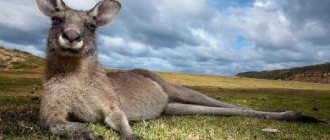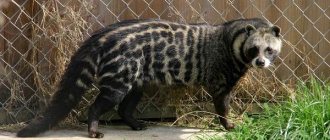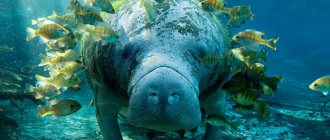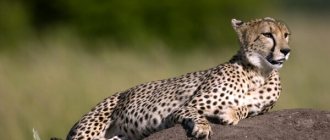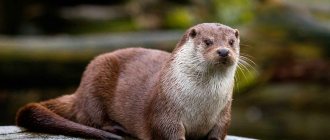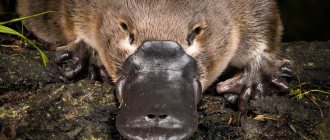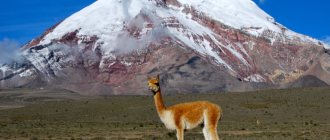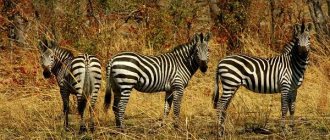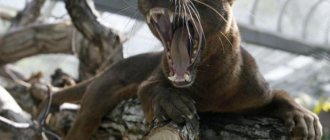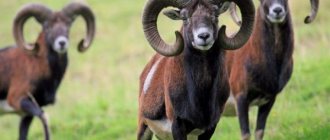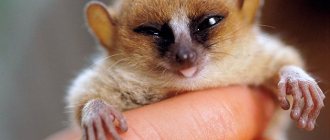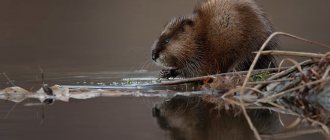Kangaroo is a unique animal. This is the only large mammal that moves in huge leaps, relying on powerful hind legs and a long tail. Their front legs are small and weak, similar in appearance to human hands. This unusual animal is predominantly nocturnal, and during the day it hides in the grass, while taking funny poses. Lovers of nature and unusual animals will be interested to know where kangaroos live, how they reproduce and what they eat.
Mating process
Kangaroos do not have a specific season when mating should take place. But reproductive processes in representatives of all species of kangaroos occur very actively.
During the mating season, real fights between males can unfold for the attention of a female. A very important role in these fights is played by the tail, which actually serves as the fifth leg. The winner gets the right to mate. Despite a developed sense of competition for a female, males have completely absent parental instincts. After the love games are over, the male disappears. The female must take care of whether the offspring will survive.
Pregnancy and childbirth kangaroo
The gestation period for kangaroos is very short. Depending on the species, offspring appear 30-40 days after mating. In order for the birth to take place safely, the female must find a secluded place. Its position during delivery is sessile, with the animal's tail located between its legs. It is on him that the newborn baby kangaroo falls.
Babies are born very small and translucent. In fact, this is not yet a fully formed embryo. The maximum body size of the cubs of the largest kangaroo species is 2-3 centimeters, and their weight is 25 grams. Only those organs that help them get into their mother’s pouch are well developed. These are long, rather strong front legs, mouth and nose.
After the birth is over, the kangaroo licks a path of wool along which the baby must get to the pouch. But the newborn needs to crawl there on his own. This is facilitated by the location of the fur on the mother’s belly, as well as well-developed sense organs. The baby makes its way to the pouch by tightly clinging to the fur on the female’s body with its front paws.
Appearance and features
Photo: Animal gray kangaroo
The gray kangaroo is considered the largest of all existing animal species. Its height reaches about two meters in height. A distinctive feature of the species is a very long, powerful tail, the length of which is almost equal to the length of the body. On average, the length of the tail is one meter.
The tail performs a balancing function and is used to maintain balance while jumping. If animals defend themselves or get into a fight, they lean on their tails and hit the enemy with their hind limbs. The weight of one adult individual ranges from 30 to 70 kilograms. Animals have pronounced sexual dimorphism, and males are significantly larger than females, sometimes almost twice as large.
The animals have thick, short and rather coarse hair. Its color is determined by its habitat. The coat can be light brown, gray, or deep gray. The area of the neck, chest and abdomen is noticeably lighter than all other areas of the body. The animals have a small head and long protruding ears.
The hind limbs are very wide, powerful and long. Their length reaches 50-65 centimeters. They have long claws and strong, very well developed muscles. In comparison, the forelimbs look too small and weak. They have five fingers, and marsupials often use them like hands, picking up food and putting it into their mouths. Females have a special pouch in the lower abdomen, which is designed for transporting and raising young.
First months of life
Once in the pouch, the baby attaches itself to one of the nipples of the mammary glands that are located there. Since he is born without fur, for the first few months he is not able to independently regulate his body temperature. Therefore, for two months he never leaves his mother's pouch.
This organ itself has a rather interesting structure. The inside of the bag is smooth, but its edges are protected by thick fur. This allows you to protect your offspring from bad weather. In addition, the female kangaroo is able to control the muscles of the pouch. She decides when to release her baby. The bag closes tightly enough. For example, no water gets into it while swimming.
At different stages of its development, the cub feeds on milk, which differs in its composition. The female has four nipples, and her body is capable of producing two types of milk that are completely different in composition. The one that the baby drinks immediately after the kangaroo gives birth has antibacterial properties. This is very important, because the newborn’s immunity is not yet fully formed.
Features of reproduction
Kangaroos breed in the wild once a year. The size of a newborn cub is only 1-2 centimeters, it is born completely helpless, blind and bald, so immediately after birth it crawls into a pouch on its mother’s stomach and attaches itself to the nipple for the next 34 weeks. If the baby does not reach the pouch and falls to the ground, the mother is forced to leave him: the baby is so small that the female will simply crush him if she tries to pick him up.
Inside, the surface of the bag is smooth, but in front of the “entrance” it is covered with thick, thick wool to protect the baby from cold and dangers. With the help of powerful muscles, the female is able to close the pouch so tightly that she can even swim, while the cub remains completely dry.
Just a few days after the baby is born, the animal is ready to mate again. Having become pregnant, the female can stop the development of the embryo for several months while the already born baby grows up. When the baby kangaroo is strong enough to leave the mother’s pouch, the female again “starts” the development of pregnancy and after a few weeks a new baby is born.
Care of offspring
The functions of the female do not end with giving life to the offspring and feeding them. She ensures their safety and also keeps the bag clean. Since small kangaroos do not leave their habitat for the first months of life, all the products of their vital activity also remain in it. Therefore, the female opens it and simply licks the cubs until they grow up.
She also puts the bag away after the baby kangaroos leave her for good. This often happens when the young offspring no longer fit there. It happens that the mother kicks them out on her own.
This is interesting: What do raccoons eat in the wild?
Natural enemies of gray kangaroos
Photo: Gray Kangaroo Australia
In natural conditions, kangaroos do not have too many enemies.
The main natural enemies of gray kangaroos:
- dingo dogs;
- foxes;
- large predators;
- some feathered predators.
Dingoes are the main enemies of local flora and fauna. However, they tend to attack fragile cubs, as well as old or weakened individuals. They cannot defeat adult and strong animals. The main enemy of marsupials was and remains man. He kills kangaroos in order to obtain meat, which is considered very tasty and healthy. It is valued and bought as a delicacy in many countries around the world. Many local residents hunt them for their skins.
Kangaroos are not at all afraid of people and often live in close proximity to them. Agricultural land with grain crops is used as a food supply. Farmers shoot animals to protect their property. The increase in the local population and the expansion of the boundaries of the territory they have developed also contribute to a decrease in the number of kangaroo populations.
Another reason for the mass death of animals is fires, which occur quite often in areas with the arid Australian climate. They quickly cover vast territories, and the animals do not have time to move to other regions.
Interesting Facts
Kangaroos live in flocks of 10-15 individuals. As a rule, the largest and strongest male is dominant.
Kangaroo meat is very nutritious and contains almost no fat, which is why it is very popular among consumers. Kangaroo meat dishes are served even in the most expensive and luxurious top-class restaurants.
These animals do not know how to move backwards; they walk and jump only forward. Residents of Australia, the country where kangaroos live, decided to depict them on their coat of arms, demonstrating that the country is also moving forward.
Female kangaroos can care for two babies of different ages at the same time. The youngest child lives in a bag, and the older one only comes to eat milk. To do this, the mother has 4 nipples with different types of milk: fattier for the newborn, and rich in carbohydrates for the older child.
Several kangaroos escaped from zoos in the United States, France and Ireland, and then managed to have offspring in the wild.
Kangaroos are unique and funny. Although most species are poorly domesticated, many zoos around the world are home to small flocks of these interesting animals, so nature lovers have the opportunity to admire them in person.
Time passed until scientists who began researching a unique representative of the Australian fauna solved this mystery, explaining to the world the fact that kangaroos carry babies in a pouch. In the process of studying these extraordinary animals, many surprising facts were revealed.
2. Today, there are more than 60 species of the kangaroo family, of which the species of large and medium-sized animals are considered to be true kangaroos.
3. There are several legends about the origin of the name “Kangaroo”. According to one of them, when in 1770 the navigator James Cook landed on the Australian coast, he saw a strange animal and asked the aborigine: “Who is this?” The native replied: “ken guru” - “I don’t understand.” The traveler decided that this was the name of the animal. In fact, in one of the languages of the Aboriginal peoples of Australia, the name of the animal has long been called “Kanguroo”.
4. All types of kangaroos have common features. Their hind legs and feet are much longer and stronger than their front legs. All species have long, muscular tails that are very thick at the base, allowing them to maintain balance and guide movement while jumping.
5.Kangaroo - the animal depicted on the national emblem of Australia is the main symbol of the country. It is believed that the choice of the kangaroo as a national symbol occurred because these animals are characterized by only forward movement, which symbolizes progress.
6.Currently, 23 million people live in Australia, and there are 2.5 times more kangaroos on the continent.
7. A kangaroo's kick is so powerful that it can kill an adult. And the sharp claws on their paws help them gut small animals.
8. Kangaroos live in groups of about 10 individuals. Although the group consists of both females and males, only the dominant male—usually the oldest and largest—mates with the females.
9. Despite their powerful paws, kangaroos cannot move backwards. That is why Australia decided to depict this animal on its coat of arms, demonstrating that the state is always moving forward and developing.
10.Kangaroos are herbivores. They search for food in the evening, when the heat subsides and can go long distances to find it. Their diet includes leaves, grass, fruits and young roots, which they dig with their front paws.
11.Kangaroos have sharp eyesight and hearing. With their ears, which can rotate 360 degrees, they pick up any sound.
Big red kangaroo
12.The symbol of Australia is the large red kangaroo (Macropus rufus) - the longest in size. The length of its body reaches up to two meters, its tail - just over a meter. The weight of a male can reach up to 85 kilograms, and a female can weigh up to 35 kilograms.
Forest gray kangaroo
13. The forest gray kangaroo is the heaviest among marsupials. Its weight can reach up to 100 kilograms. The height of the animal when standing on its hind legs is on average 1.7 meters.
Mountain kangaroo
14. Mountain kangaroo (wallaroo) is a large kangaroo that has a squat build: broad shoulders, short and squat hind legs. Unlike other large species, it has no fur on its nose and the soles of its paws are rough, which allows them to move easily across mountainous terrain.
Tree kangaroos
15. Tree kangaroos are the only representatives of this family that live in trees. They reach a length of 60 centimeters, have prehensile claws on their feet and thick brown fur, which makes them invisible among the foliage of trees.
Wallaby
16. Smaller kangaroos are wallabies, reaching only 50 centimeters in length, and the smallest weight of a female can be 1 kilogram. Outwardly, they resemble a rat with a long, bare tail.
17. All female kangaroos have a pouch. Its edge is formed by strong muscles, which it can compress if necessary, for example, protecting the cub from the rain, and unclench it so that it can stick out. There is no fur inside the bag, and the fur is thickest at the entrance.
18.Kangaroo is the only large animal in nature that moves in leaps that can reach a length of up to 8 meters and a height of up to 3 meters. When jumping, animals sweat profusely. This maintains a stable body temperature, and when stopped, their breathing reaches 300 breaths per minute.
19.Kangaroos live in Australia, on the Bismarck Archipelago, on the islands of Tasmania and New Guinea. Habitats depend on the type of kangaroo. For the most part they live on the plain, where bushes and thick grass grow. They can also be found on the beach. Mountain kangaroos live in mountainous areas, Walabi - in the shroud. Tree kangaroos climb trees.
20.For humans, kangaroos are often hunted for their fur and meat. In Australia, it has been officially legal to eat kangaroo meat since 1980.
21. A female kangaroo can become pregnant and then abort her pregnancy (temporary cessation of vital functions). If the female has been fertilized, but is not yet ready to give birth (for example, she is already carrying one baby), then the embryo goes into a state of diapause until she raises the previous baby.
22. Kangaroos are mainly hunted by people and dingoes. Animals often defend themselves by leading the pursuer to water and trying to drown him.
23. One of the most amazing facts about kangaroos is that females can determine the sex of their babies. Scientists don't yet know how they do it, but female kangaroos give birth to females at a younger age, leaving male embryos for later when they eventually leave the group.
24. Tree kangaroos do not sweat, and to cool down they take cover in the shade or lick their front paws and then run them over their furry chest.
25. Endemic to Australia and Papua New Guinea, several kangaroos have managed to escape from zoos in the United States and France and breed in the wild. In Ireland, on the island of Lambay, there lives a whole colony of wallabies.
26. Kangaroos cannot move their paws independently of each other: they always move them at the same time - as if they were connected. However, during swimming, for reasons still unknown to science, they move them independently of each other.
27. Female kangaroos mate just a few days after giving birth to their babies. This way, if anything happens to it, she always has an embryo in diapause, ready to develop.
28. The jump of a large red kangaroo reaches 3 meters in height and 8 meters in length. If you add to this the maximum speed of 60 km/h that they can develop, you get a rather agile marsupial.
29. The highly nutritious meat of kangaroo is sold in different countries around the world. It has gained popularity in Australia over the past few decades, especially in high-end restaurants.
30. Some cubs do not leave the brood pouch for 8 months after they entered it. By that time, they become full-term, covered with hair and are already able to make their first jumps.
31. When there is a battle for dominance between two male kangaroos, it is easy to know which one is dominant. In such fights, only the subdominant male hits with his paws. (Like other infraclass marsupials, male kangaroos are unique in that their testicles are located above, rather than below, the penis.)
32.Inhabited in Australia, Tasmania and Papua New Guinea, the kangaroo has become such a recognizable symbol of Australia that its images can be seen on the country's banknotes, commercial products and even on the banner of the Royal Australian Air Force.
33. The birth of a baby kangaroo is one of the strangest in the animal kingdom. A small, pink “worm” emerges from the birth canal of a female kangaroo at the equivalent of 7 weeks of human pregnancy. The underdeveloped tiny creature must grab onto its mother with its barely emerging front legs and climb up the thick fur to settle in her brood pouch.
34.Gathered in a group, kangaroos can raid pastures or fields and destroy crops.
35.Kangaroos mate all year long, so females are constantly pregnant. Their pregnancy lasts 1 month. If there is already a baby in the pouch, the female may stop the development of the fetus. Delaying the birth of a baby can keep it alive during droughts when there is not enough food.
36. Large red kangaroos can eat dry, hard and even prickly grass, which they eat in a day in a volume comparable to a portion of a sheep. Rat kangaroos also eat insects and worms.
37.Kangaroos - stay in groups and become active at dusk, and during the day they usually rest in the shade. The worst enemies of kangaroos are sand flies. After the rains have passed, countless numbers of them are concentrated near reservoirs where kangaroos come to drink. Swarms of flies swoop down on animals and sting their eyes. Sometimes kangaroos even go blind from these bites.
38. Kangaroos actually have a fifth leg, a kind of paw. Used to maintain balance while jumping, the kangaroo's powerful tail acts as a fifth paw when walking. When they kick with their hind legs, they rely on their heel.
39. To demonstrate to other males their strength and power, male kangaroos uproot grass and bushes.
40. Once a baby kangaroo is old enough to leave its mother's pouch for good, it still returns there to drink her milk. Because the female may already have another baby developing in her pouch at this time, female kangaroos have a well-functioning lactation system: one nipple produces high-carbohydrate milk for the older baby, and the other teats produce high-fat milk for the younger baby.
41. Female kangaroos have a rather interesting anatomical feature: they have three vaginas. Two of them are used to carry seminal fluid into the uterus, of which kangaroos have two. During childbirth, the fetus enters the middle vagina from the uterus, and from there, through a special birth canal, out, so that it can then, clinging to the mother’s fur, rise and climb into the pouch.
42.All kangaroos have strong teeth arranged in several rows. When one tooth is worn down, it is replaced by a tooth growing behind it.
43. In 1980, it was legal to eat kangaroo meat in Australia.
44.When fighting with an enemy, the kangaroo transfers the weight of its body to its tail and strikes with its hind legs. Its back paws can easily break a skull, and its claws can rip open the skin.
45. The baby grows in the mother’s pouch from 120 to 400 days, and several weeks before leaving it, it begins to protrude from it. If there is not enough food or the cub gets sick, the mother may throw it out of the pouch.
46.Kangaroos live on average 12 years in the wild, and up to 25 years in captivity. Kangaroos breed well in zoos.
47.At night in Australia, kangaroos often run out onto the road at night and collide with passing cars, creating emergency situations.
48.Only 2% fat is found in the body of kangaroos, so by consuming their meat, people fight obesity.
49. The kangaroo is considered the largest mammal that moves by jumping.
50... All species of these animals are adapted to go without water for a very long time, and when they feel thirsty, in search of it they can dig a well up to a meter deep with their paws or peel off the bark of trees and lick the juice from them.
photo from the Internet
What do kangaroos eat in the wild?
Kangaroos are herbivores. Like cows, they chew grass, swallow and regurgitate it to make it digestible. Eating can occur at different times of the day and depends on the ambient temperature. During hot periods, kangaroos can lie in the shade all day and go out to eat at night. One of the most amazing features is that kangaroos can go for months without water. On dry days, they feed on grass and tree bark, thus saturating their body with moisture.
Habitats
Countries where kangaroos live are Australia, Tasmania and New Guinea, as well as New Zealand. Many species of these animals prefer to live on plains among thick, tall grass and sparse shrubs. Kangaroos are mainly nocturnal, so this habitat allows them to safely hide during the day. The animals make large nests out of grass, and some species dig shallow burrows. Mountain species live in inaccessible rocky gorges. These small animals have perfectly adapted to their environment: their paws have become tough and rough to move safely on slippery stones. Tree kangaroos live in trees; they crawl freely and jump from branch to branch, but come down to the ground for food.
Where does the gray kangaroo live?
Photo: Gray kangaroos from Australia
The animal’s homeland is Australia, in particular, almost all of Queensland. Marsupials are distributed throughout almost the entire continent. The exception is the western parts of Cape York, South Wales, some regions of Tasmania, especially the North East. Numerous populations are found in New Guinea and in the Bismarck Archipelago region. Kangaroos were brought by humans to New Guinea, where they successfully took root.
Gray kangaroos live in:
- southern regions of Australia;
- Victoria;
- New South Wales;
- Queensland.
When choosing a habitat, the gray kangaroo is not picky or selective. It can be found in a variety of areas - in open forests, meadows, desert areas. Forested areas and mountainous areas are no exception. As a habitat, gray kangaroos prefer regions with high rainfall, but feel quite comfortable in regions with a semi-arid climate.
Kangaroos are not at all afraid of people, so they often settle near human settlements. They can be found on the outskirts of sparsely populated areas. The vast majority of gray kangaroo populations live on flat terrain with thickets of bushes, tall grass or forests. Because of this, they are even called forest kangaroos. They can be found on rocky terrain, where they feel quite comfortable.
